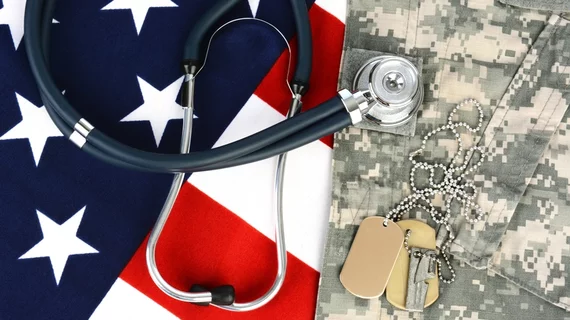Half of patients who receive percutaneous coronary intervention (PCI) at Veterans Affairs (VA) hospitals in the U.S. travel more than 48 miles for the procedure; a quarter travel at least 110 miles. Yet distance to the PCI site doesn’t significantly influence one-year outcomes, a recent study found.
“Despite this wide range of distances traveled, there was no association between patient distance to PCI center and subsequent outcomes of death or myocardial infarction (MI) at one year,” wrote authors led by Javier A. Valle, MD, a cardiologist with Veterans Affairs Rocky Mountain Regional Medical Center and the University of Colorado, in the September issue of Circulation: Cardiovascular Quality and Outcomes.
“These findings suggest that regional referral networks may represent viable models for PCI care delivery.”
Only 67 of 149 medical centers in the Veterans Health Administration are able to perform PCI, Valle et al. noted, necessitating a regional referral network.
Researchers have likened these networks to a “spoke and hub” model, where smaller spoke facilities refer patients to central hub hospitals. The expected benefits of such an approach stem from evidence that more experienced centers and operators achieve better outcomes for several diagnoses and procedures. However, it also leads to patients traveling greater distances for specialty care, which previously had “unknown consequences” for longitudinal patient outcomes following PCI, the authors wrote.
Valle and colleagues studied 31,483 patients who underwent PCI at 64 VA sites between 2008 and 2012. They divided the individuals into quintiles based on how far they traveled for the procedure, and then calculated the one-year composite outcome of death or hospitalization for MI.
Using the shortest-distance group as a reference, patients in quintile two had a 2 percent greater chance of meeting the composite endpoint after multivariable adjustment. Quintile three patients had an adjusted 6 percent increased risk, while patients who traveled the farthest actually showed a decreased risk—8 percent for quintile four and 3 percent for quintile five. However, these differences were deemed statistically insignificant, as were the findings when the cohort was stratified based on the acute coronary syndrome presentation or the urgency of PCI.
“A regional referral network spoke and hub model may offer an effective means to deliver PCI care without adversely impacting longitudinal patient outcomes,” the researchers concluded.
Limitations of the study include its observational nature, which hinders the ability to infer causality, as well as its relatively homogenous veteran population. Similar results in cohorts with greater proportions of women and minorities would strengthen the conclusions, the authors said.
“The findings of this analysis may not be generalizable to facilities that are not part of an integrated healthcare system with regional referral networks,” they wrote. “However, consolidated healthcare services and integrated healthcare services are becoming more commonplace in the United States, and these findings may carry significant implications for their development and planning.”

